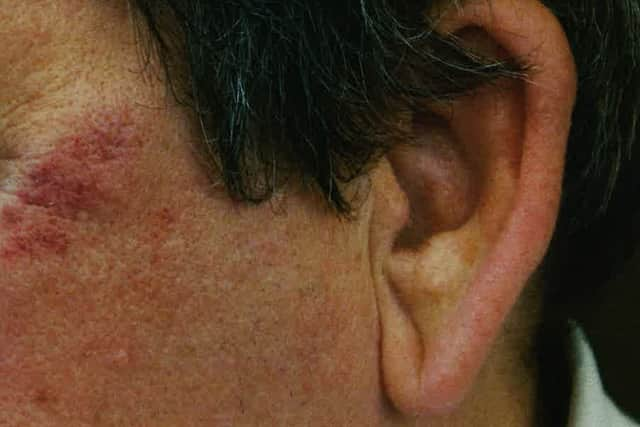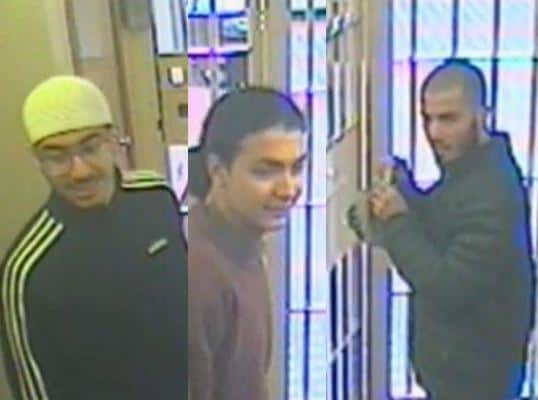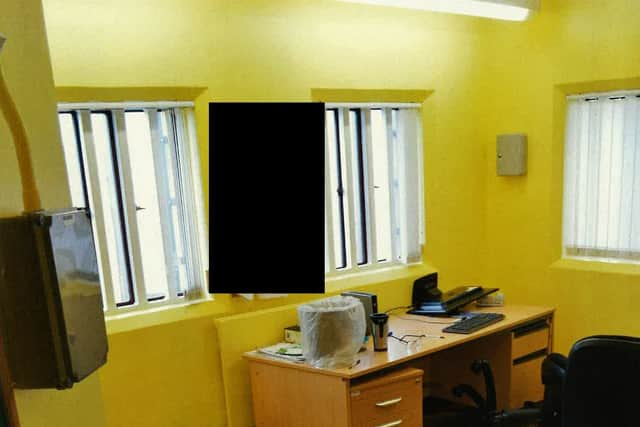Terrorist attacks on prison staff ‘absolutely inevitable’ after Belmarsh assault, warns top security expert
and live on Freeview channel 276
A top counter-extremism expert has issued a stark warning that further attacks on prison staff are “inevitable” and that the UK is “not far off” an officer being killed by a jailed terrorist.
Ian Acheson, an ex-prison governor and counter-terror advisor, has warned that the “terrorist murder of a member of prison staff” has so far been “avoided through sheer luck”.
Advertisement
Hide AdAdvertisement
Hide AdMr Acheson, who reviewed Islamist extremism in British jails in 2016, described deradicalisation efforts as “crude and generic” and called for an overhaul of prison security.
And it follows the attempted murder of another prison officer at HMP Whitemoor.


Of the risk of similar attacks, he told LondonWorld: “It is absolutely inevitable it’s going to happen again. I think we are not far off the terrorist murder of a member of prison staff.
Advertisement
Hide AdAdvertisement
Hide Ad“We’ve not avoided that by good intelligence or protocol. We’ve avoided that through sheer luck. We need a complete review of how we separate the most highly dangerous prisoners.”
While he described the attack by Parsons Green bomber Ahmed Hassan, Manchester Arena bomber Hashem Abedi, and convicted ISIS supporter Muhammed Saeed, as “brazen and ferocious” and said it “could have resulted easily in death or life-changing injuries”.
Mr Acheson, who is a senior advisor for the Counter Extremism Project, said while the sentences of up to three years and ten months were “appropriate” they would be “meaningless to two of the three people who are locked up and will probably die in custody”.


He added: “Abedi and Hassan have got enormously long sentences that they probably won’t even survive - because custody tends to kill people after a long time.
Advertisement
Hide AdAdvertisement
Hide Ad“We’ve got a significant number of thwarted terrorists locked up with nothing to do except reflect on the fact they havent been able to carry out their jihad and study available targets.
“I’m most concerned that the prison service doesn’t seem to be able to properly manage the risk they pose. These attacks are likely to be attacks to kill.”
The Ministry of Justice (MoJ) said it has zero tolerance for radicalisation in custody and prison staff are trained to tackle extremism.
Mr Acheson also criticised the deradicalisation programmes given to prisoners behind bars - citing the attacks carried out by Isman Khan and Sudesh Anman after they were released.


Advertisement
Hide AdAdvertisement
Hide AdKhan, 28, murdered Saskia Jones and Jack Merritt outside Fishmongers Hall, central London, where a prisoner education event was being held, before being shot dead by police.
While 20-year-old Amman stabbed two people on Streatham High Street before police shot him dead in February 2021.
“I’d describe [prison deradicalisation programmes] as crude and generic,” he said, adding: “They’re not targeted and likely to fail.
“These courses don’t do any good and are easily gamed by the people who are put on them. Terrorists are not stupid. We need to be actively challenging their ideologies.”
Advertisement
Hide AdAdvertisement
Hide AdSpecialist psychologists assess terrorist prisoners’ level of risk, the MoJ says, and provide tailored interventions, such as restricting activities and communications, or moving them to another prison.


While he also called for a thorough review of the safety at Belmarsh top-security unit, known as ‘a prison within a prison’, including separation units for dangerous individuals, which he said he had recommended greater use of in his 2016 review.
“A lot of the problem is down to the bureaucratic bungling and complacency of the prison service, who’ve created such a high bar [for separation] almost no one can get in,” he said.
“We need an independent external review of the security of that unit. It’s the most secure custody we have - nowhere is worse than Belmarsh high security unit.
“It is the dungeon of dungeons.”
Advertisement
Hide AdAdvertisement
Hide AdThe MoJ said separation centres were available to house the most dangerous offenders and protect other prisoners from their influence.
And he said the review “needs to be done externally and independently - you can’t have the prison service marking its own homework”.
He added: “I still do not believe the prison service has got the capability to confront or deal with that threat.”
A Ministry of Justice (MoJ) spokesperson said: “It is absolutely right that terrorist offenders of such risk are housed in our most secure prisons so they can be subject to much stricter monitoring and conditions – including rigorous oversight of who they are associating with, routine checking of correspondence and higher staffing.
“We will never tolerate such appalling attacks against hard-working staff and – as in this case - will always push for the strongest possible punishment.”
